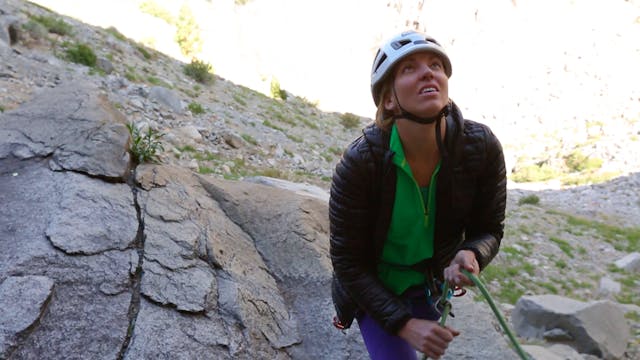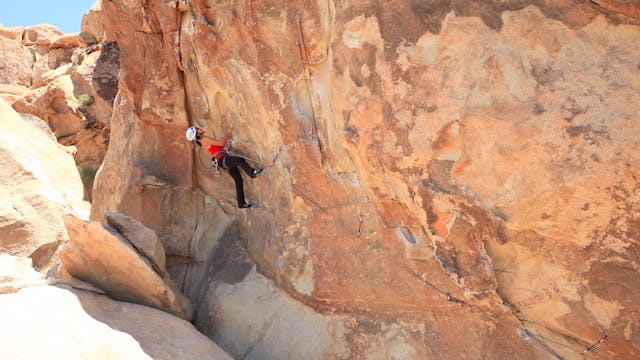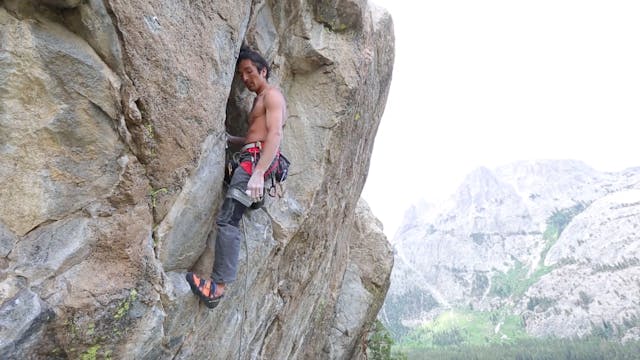Sport Climbing: 9. Rope Considerations for the Leader
Sport Climbing
•
1m 31s
In this video we review rope considerations for the leader when sport climbing. As the saying goes, “Climbing isn't dangerous—falling is!”
When climbing, we want to stack the odds in our favor, and increase our margin of safety. One way to accomplish this is to be conscious of where and how the rope is running while lead climbing.
The leader needs to manage the rope position at all times, ensuring the rope doesn’t catch the back of their feet or legs and flip them upside down in the event of a fall.
In general, aim to keep the rope in between the rock and your body. If you notice it behind your leg or foot, simply step over it to correct the position.
When climbing straight up, keep the rope between your legs, running straight down to the last bolt.
When the climb traverses—even slightly to the right or left—keep the rope on the opposite side of your body. For example, If you are climbing up and right, then keep the rope running out from your left thigh as you climb.
We hope you found this video helpful. Feel free to comment below with questions or thoughts!
Please remember, climbing is inherently dangerous. Climb at your own risk.
Up Next in Sport Climbing
-
Sport Climbing: 7. Soft Catches
In this video we review “soft catches,” a belaying technique which gently catches a lead fall. Sport climbing allows climbers to test the limits of their abilities, and minimize the dangers of falling, via the use of bolts as protection. Falling can be a part of climbing—and as saying goes, “If y...
-
Sport Climbing: 10. Successful Projec...
In this video we review the definition of, and considerations for, successful projecting.
On-sighting a route is one of the most gratifying achievements of rock climbing. This is when a climber “sends” a route on their first try, without any “beta” or information about the route. This can be a...
-
Sport Climbing: 11. Resting on Routes
In this video we review the importance of resting on routes.
While on a long route, it is important to:
- Look for large holds or stances where you can relax your body, and catch a rest.
- Use straight-arm techniques to hang on your skeletal system, as opposed to pulling with your muscl...


